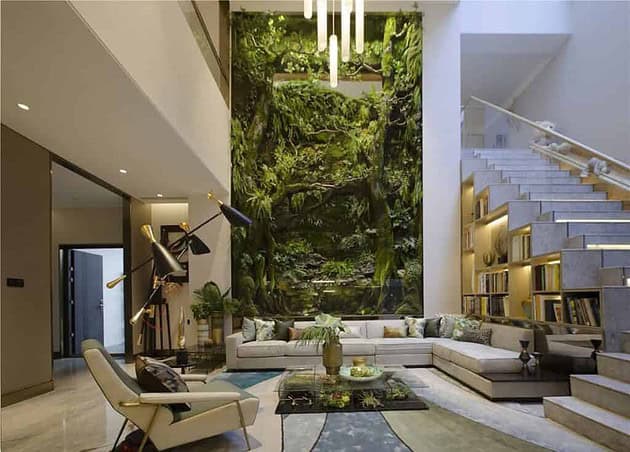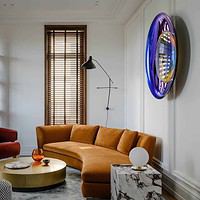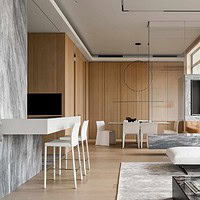Designing a home is an opportunity for creativity and ingenuity. Still, many forget the importance of letting nature in on it.
There are many opportunities in modern architectural design to incorporate natural elements into homes. Sustainable design practices are necessary to preserve areas near and far from them.
Through green building practices, designers can create homes that are unique, sturdy and sustainable.
From color to plants, here are five reasons to add natural features to new building designs.

1. It Improves Mental Health
The average American spends over seven hours a day in front of screens; for many, it’s unavoidable. Between more computer-based careers flooding almost every field to students using their computers to learn at a young age, it’s important to connect back to nature.
Being surrounded by natural elements helps people to rest and rejuvenate in a world of eye strain and mental stress.
Research shows that being around plants, natural elements and earth tones helps with staying mindful throughout the day.
Large windows allow for more natural light exposure, which regulates the circadian rhythm and reduces symptoms of anxiety and depression. This design is especially helpful for people who struggle with seasonal affective disorder.
Some studies indicate that children with attention deficit disorder (ADD) benefit from being around natural elements, reducing their symptoms.
2. It Improves Physical Health
Over half of Americans live with chronic illnesses, many of which are preventable. With heart disease and type 2 diabetes rates still increasing, many low-income individuals, minorities and those living with disabilities struggle to prevent and treat these conditions.
Being in natural designs can aid in the recovery and prevention of chronic and other types of illnesses. These elements reduce heart rate and blood pressure, relax muscles and improve recovery outcomes.
It all comes from the calming effect natural colors and elements have on the mind, reducing stress hormones that can lessen illness symptoms. Certain plants can help clean the air, increasing the oxygen one receives at home, school or work.
Exposure to natural elements is a free way to improve illness symptoms.
3. It Reduces Carbon Emissions
Incorporating nature into a home is part of biophilic design, which isn’t just good for human and environmental health.
When builders use natural, sustainable elements in their design, they reduce carbon emissions in producing and disposing of artificial and single-use materials, such as brick, concrete and plastics.
Living with nature, not away from it, can support cleaner air, preserve natural resources and reduce climate change.
4. It Looks Better
Modern homes can look bland without the right touches, and a bit of nature can do every home some good.
Earth tones are inviting colors that contrast starker, cleaner ones. These colors can add breathability to a home and serve as a destressing agent for anyone inside.
Using plants as decor provides pops of bright colors, creating spaces that feel alive and reducing the monotony of any room. With all of the options, designers can experiment with shape, size and color.
Natural materials also add unique textures to a home, creating visual interest and a positive sensory experience. Wood, stone and clay furniture or art pieces can make a home more interesting while still being a calm and rejuvenating place.
5. It’s Cost-Effective
While natural, sustainable materials may cost more up-front, the long-term savings make a choice more than worth it.
Natural light and sustainable windows can greatly reduce energy costs by providing light throughout the home without turning on artificial lighting sources. Combined with multi-panel windows, homeowners can reap the benefits of natural light without sacrificing heating, ventilation and air conditioning (HVAC) power.
Materials from the earth are solid and tend to hold up better than manufactured materials over time with the proper care, leading to fewer repairs throughout an owner’s time there.
Ways to Incorporate Natural Elements into Design
There are many ways to use natural elements in home design. Here are some things to consider:
-
- Using wood and recycled materials to construct the frame.
- Planning spaces for greenery throughout the home.
- Constructing large windows in areas that create the lightest, leaving room for owners to install blinds, shutters or curtains.
- Use natural wood and stone when planning out cabinets or kitchen islands.
- Plan for automatic taps to conserve water.
- Use thicker doors to insulate with a tight seal to the doorframe.
- Strategically plan for trees to provide shade throughout the exterior, providing natural cooling to the home during summer.
- Consider adding garden beds that are easily accessible from windows.
- Provide ventilation throughout the home for faster cooling and temperature maintenance with a furnace or air conditioning system.
- Utilize eco-friendly paints on walls and ceilings, with waterborne finishes on floors.
- Locally source materials.
Using Sustainable Practices in Home Design
Sustainable architecture and design are essential to preserving the environment. With architecture contributing to 40% of carbon emissions released into the atmosphere, it’s necessary to carefully choose environmentally-friendly elements for each building they construct to create well-made buildings that protect the future.














